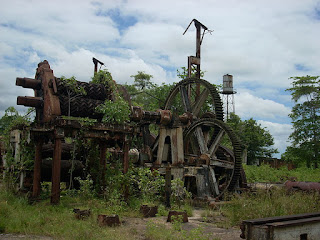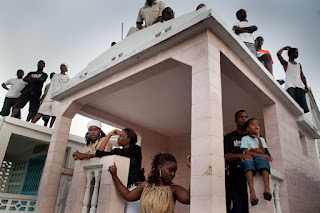Suriname
One of the most eye opening things we can do as humans on this planet is travel. Traveling is a great way to see and try new things, experience new cultures, and to meet new people with different outlooks on life. One interesting place to visit is Suriname. The language spoken is Dutch, and the surinamese dollar is king. It exists on the South American Tectonic plate and is a land of many wonders offering swamplands, deltas and coastal plains, mountains, volcanoes, and rolling hills. It even has 7 major rivers. Suriname is a tropical place with climes between 28 Celsius to 32 Celsius during the day and reaching a breezy 21 Celsius at night. Be sure to time your travels appropriately as the seasons are a touch different. There are 2 wet seasons with the first and longest between April and August and the second between December and February. In the west coast region, there is approximately 76 inches of rain per year, and 95 inches of rain per year in the eastern region. The dry seasons are during August and Novemeber and February and March. During these times, there are plenty of sights to be seen.
Sources referenced:
Images:
https://www.waterproofsuriname.com/wp-content/uploads/2015/06/Bigi-Pan-21-e1435062689191.jpg
https://upload.wikimedia.org/wikipedia/commons/thumb/f/f2/Marienburg_old_sugar_factory.JPG/220px-Marienburg_old_sugar_factory.JPG
The coastal plain in the North is a swampland that covers roughly 16% of the northern part of the country and is broken up into 7 districts. While some land has been cleared for farming, the swamplands, there is a portion that remains untouched in the Nieuw Nickerie area called The Bigi Pan Nature Reserve. The Bigi Pan Nature Reserve is a beautiful open lagoon which you should visit if you are interested in the local flora and fauna as it is a huge bird watching site and is Suriname's largest open water lagoon.There you will also find mangrove forests and all that the mangroves have to offer whether they be white mangrove, red mangrove, or black mangrove. Thanks to the mangroves, the birds have roosts despite the deforestation problem which plagues parts of the country. The best seasons for bird watching are February to March and end of July to November. Beware however if you seek assistance from a guide as it is not uncommon for tourists to be taken where they should not go or worse, to hunt these birds and other animals illegally. This of course is not the only area in which one might be able to bird watch however, so don't fear! Toucans are near!
The Western Coastal regions are going to be hotspots for those who wish to view the more rural life of Suriname's inhabitants or focus on the wildlife the country has to offer. It has 3 districts: Coronie, Nickerie, and Saramacca. Coronie is a very fruitful place and is conveniently the least populated if you need a break from the hustle and bustle of the capital city of Paramaribo. This particular area is known for its coconut palms if you'd like to see one for yourself or pick your own coconut. The next neighboring area is the Nickerie district which has the third largest settlement in Suriname and is a farming area with an eclectic group of people (a large Hindu population as well as Javanese, some Chinese and even Creoles) for inhabitants. The main livestock farmed are cows, but they also have sheep, goats, chicken and ducks. Nickerie is a 4 hour drive by car from Paramaribo, and thanks to the installation of more gas stations though the countrysides, there should be no problems commuting for a quick day trip. Lastly, is the Saramacca District which is known for its birds and farming of bananas and rice. Yet another bird watchers haven, Saramacca is home to toucans, parrots, rock roosters and more, and people come from all over the world to admire the birds found there.
The east coast districts have a more of the tourist style attractions and offers one of the most intact displays of former colonial plantations from the Dutch colonization. It's districts are Commewinje, Marowinje, Paramaribo, and Wanica. These districts offer sights in the way of nature reserves, architecture, museums, and even religious sites such as mosques. One museum on the east coast is the Bakkie Museum in the Commewinje District. This museum is home to any finds of the seafaring such as maps, old bottles, prints and paintings, and utensils. The city of Lelydorp is home to the Neotropical Butterfly Park, and the Flor Para, which is a guided tour through gardens with collections of tropical plants for your viewing pleasure. For those of you looking for a creature comfort a little close to home, they even have a casino here! If you are interested in seeing the mining of one of Surinames natural resources, Moengo is the place for you as here they mine Bauxite.
Suriname has a little bit of something for everyone, and is a culturally diverse place. The sites and sounds vary and inspire, and the wildlife boggles minds.
To fly directly to Suriname, The Zorn En Hoop airport or Majoor Henry Fernandes Airport will be your landing spots. However, if you want to make a full trip out of it and see as much as you can, there is a quick way from Guyana! You cross the Corentyne River by ferry at the Moleson Creek. You are dropped off in the Nickerie disctrict in all of 30minutes. The ticket cost for the ferry is GYD2000 one way, or GYD 3000 for both ways, and SRD30 for one way or 50 to return. for some perspective, one suriname dollar is approximately $.13 American. Pretending to fly just a few weeks from now showed that the ticket cost from Atlanta to any Suriname airport is approximately $1,600. Now to figure out if you only want to see Suriname, or if you'd like to venture to the surrounding countries also and go from there.
Sources referenced:
Images:
https://www.waterproofsuriname.com/wp-content/uploads/2015/06/Bigi-Pan-21-e1435062689191.jpg
https://upload.wikimedia.org/wikipedia/commons/thumb/f/f2/Marienburg_old_sugar_factory.JPG/220px-Marienburg_old_sugar_factory.JPG



Comments
Post a Comment